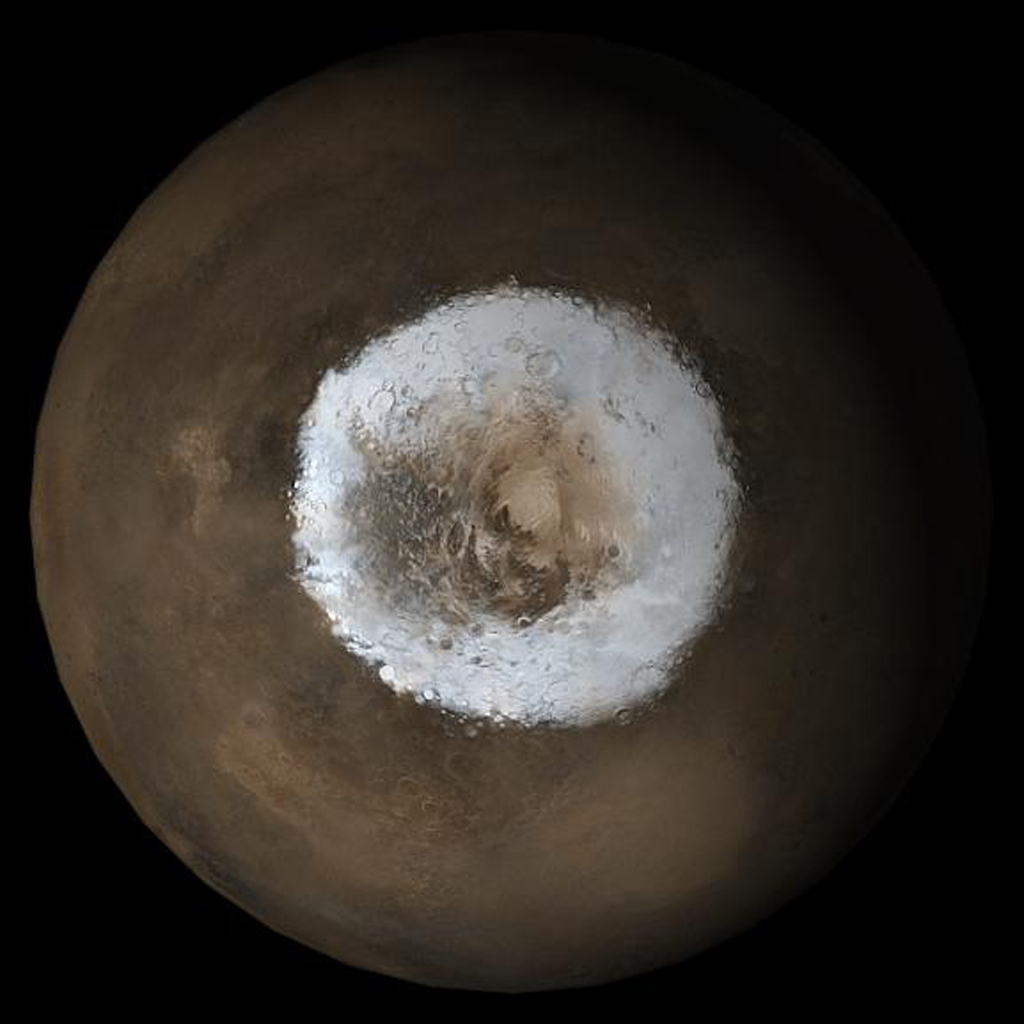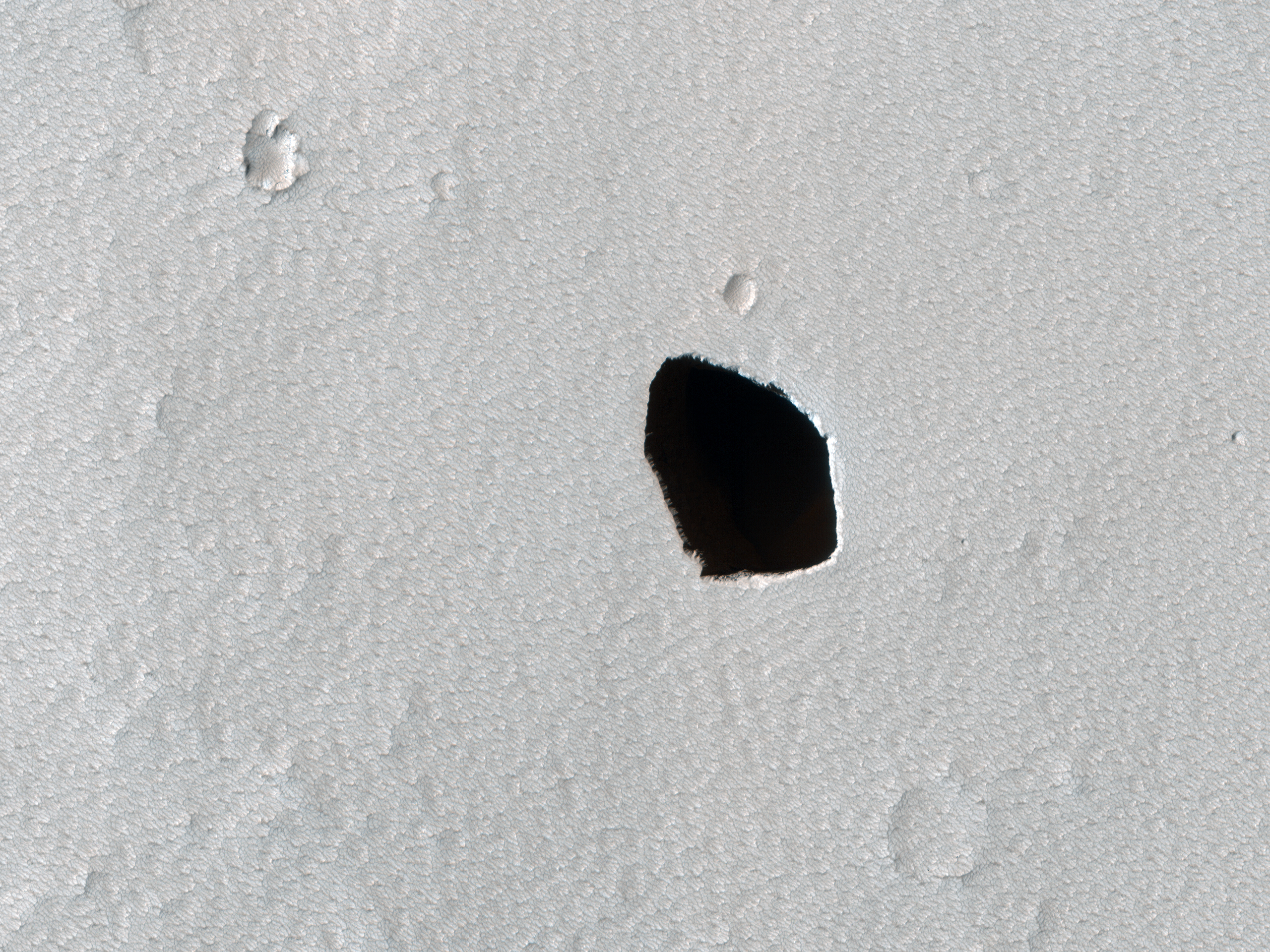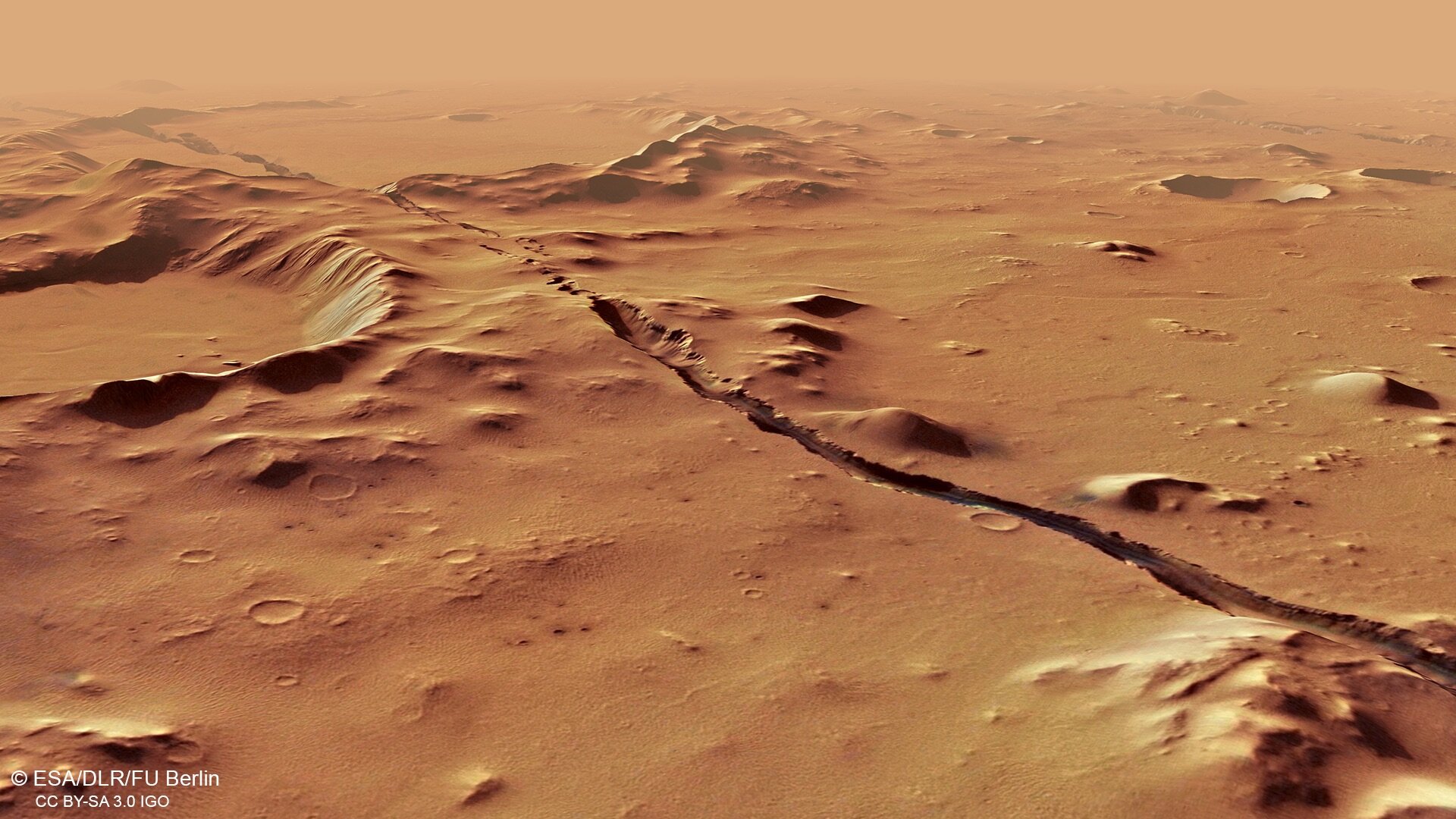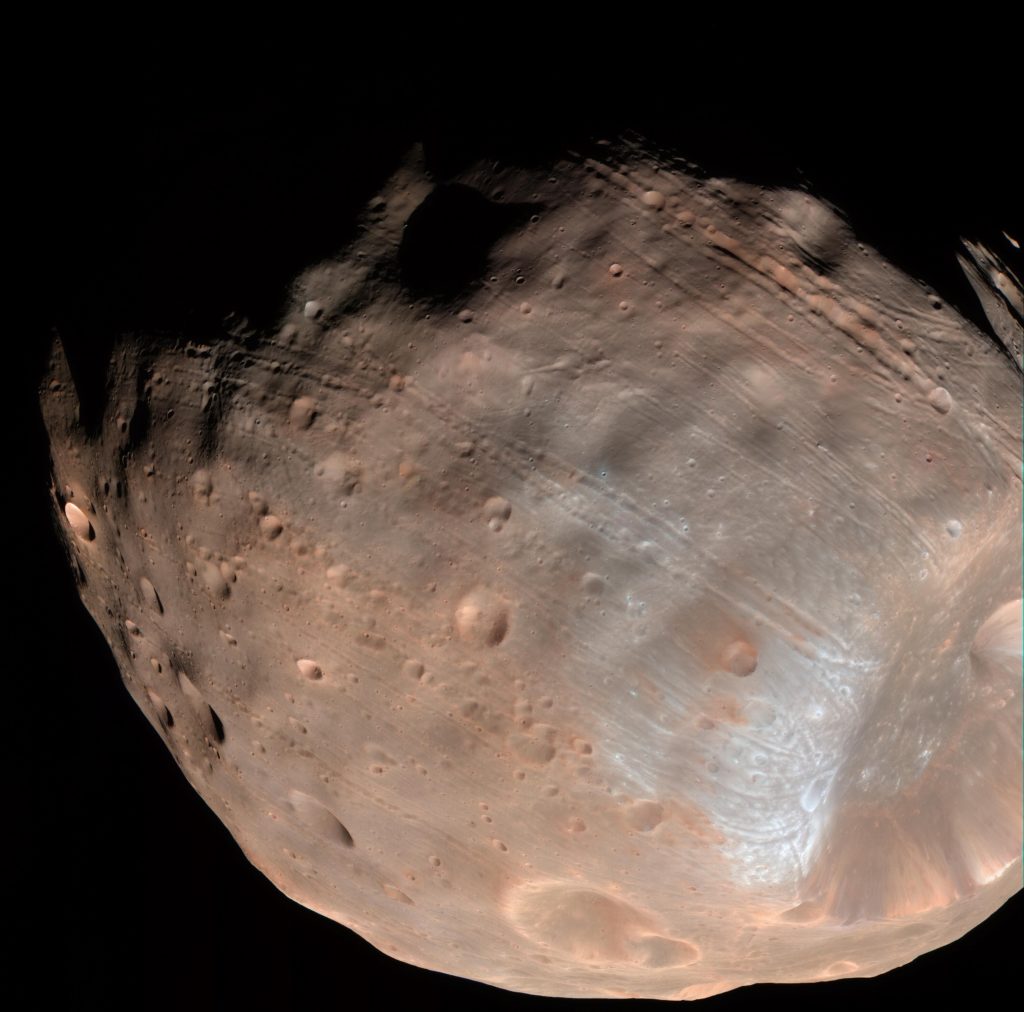
31 May 2005
This picture is a composite of Mars Global Surveyor (MGS) Mars Orbiter Camera (MOC) daily global images acquired at Ls 211° during a previous Mars year. This month, Mars looks similar, as Ls 211° occurred in mid-May 2005. The picture shows the south polar region of Mars. Over the course of the month, additional faces of Mars as it appears at this time of year are being posted for MOC Picture of the Day. Ls, solar longitude, is a measure of the time of year on Mars. Mars travels 360° around the Sun in 1 Mars year. The year begins at Ls 0°, the start of northern spring and southern autumn.
Season: Northern Autumn/Southern Spring
A new study from Caltech suggests that the theory, developed by physicist Robert B. Leighton (BS ’41, MS ’44, PhD ’47) and planetary scientist Bruce C. Murray, may indeed be correct.
Carbon dioxide makes up more than 95 percent of Mars’s atmosphere, which has a surface pressure of only 0.6 percent that of Earth. One prediction of Leighton’s and Murray’s theory—with enormous implications for climate change on Mars—is that its atmospheric pressure would swing in value as the planet wobbles on its axis during its orbit around the sun, exposing the poles to more or less sunlight. Direct sunlight on the CO2 ice deposited at the poles leads to its sublimation (the direct transition of a material from a solid to a gaseous state). Leighton and Murray predicted that, as exposure to sunlight shifts, atmospheric pressure could swing from just one-quarter that of today’s Martian atmosphere to twice that of today over cycles of tens of thousands of years.
Now, a new model by Peter Buhler (PhD ’18) of JPL, which Caltech manages for NASA, and colleagues from Caltech, JPL, and the University of Colorado, provides key evidence to support this. The model was described in a paper published in the journal Nature Astronomy on December 23.
The team explored the existence of a mysterious feature at the south pole of Mars: a massive deposit of CO2 ice and water ice in alternating strata, like the layers of a cake, that extend to a depth of 1 kilometer, with a thin frosting of CO2 ice at the top. The layer-cake deposit contains as much CO2 as in the entire Martian atmosphere today.











